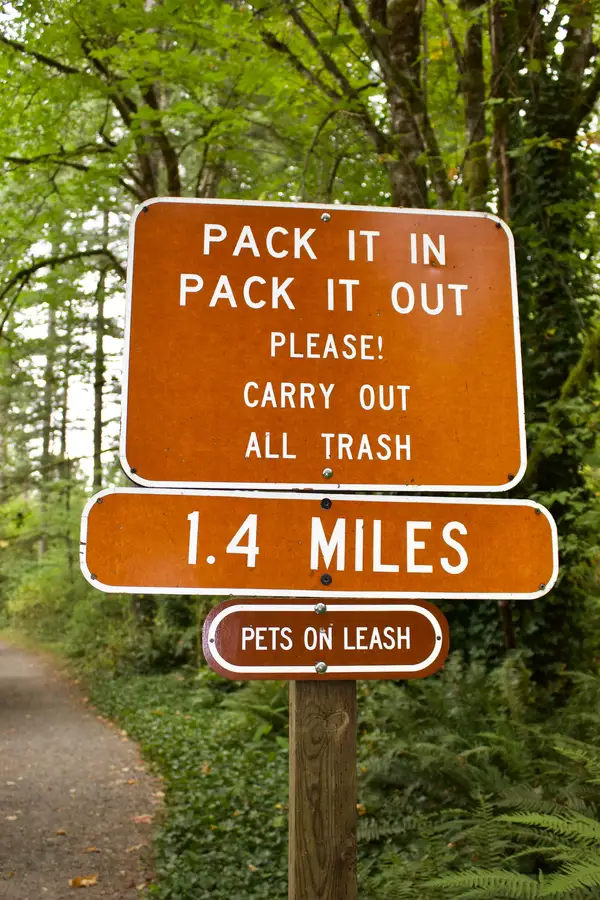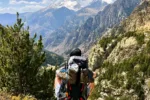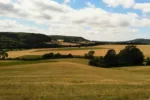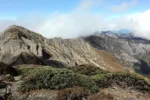Hiking Etiquette: Do’s and Don’ts on trail
This post may contain affiliate links. This means that we may receive a small commission from purchases through those links. Read more in our affiliate disclosure.
Hiking etiquette is more than just good manners; it’s a crucial aspect of preserving the natural environment and ensuring a safe, enjoyable experience for all trail users. This article will help you navigate the trails responsibly and courteously.

Table of Contents
Follow ‘Leave No Trace’ Principles
- Always take all trash with you. This preserves the natural beauty and cleanliness of the environment for others and prevents harm to wildlife that might ingest it.
- Do not disturb or take natural objects or wildlife. This helps maintain the natural ecosystem and ensures that future hikers can enjoy the same pristine environment.
- Relieve yourself away from trail and water sources: Do so at least 200 feet (60 m) away from trails and water sources. Make sure to bury your solid waste. This prevents contamination of drinking water sources and minimizes the chance of other hikers encountering unsightly waste.
- Pick Up Extra Trash: If you find trash, consider taking it with you. This act of kindness contributes to a cleaner trail and sets a positive example for other hikers.
Right of Way Hiking Etiquette
- Uphill hikers have the right of way over those going downhill. This is because uphill hikers often have a limited line of sight and stopping on an incline can be challenging.
- : Solo hikers should yield to larger groups. This helps streamline trail traffic and is generally safer for the solo hiker.
- Bicyclists yield to hikers and horses; hikers yield to horses. This hierarchy is established for safety, as horses can be easily spooked, and bikers are typically faster and more agile.
- When in groups, hike single-file. This minimizes trail impact and allows others to pass safely without stepping off the path.
- When taking breaks, move off the trail. This helps to avoid obstructing the path for other hikers and keeps the trail clear.
Respect Wildlife
- Don’t Feed Animals: Refrain from feeding wildlife. Feeding animals disrupts their natural foraging habits, and can lead to aggressive behavior towards humans once the animal expects to be fed.
- Keep dogs on a leash, or under control in areas where going off-leash is allowed, and manage their waste responsively. This prevents conflicts with wildlife and other hikers, and maintains the cleanliness of the trail.
Don’t Bother Others
- Keep conversations and phone volume low. The trail is a place where many seek tranquility and a break from the noise of everyday life.
- Set phones to silent mode. Unexpected noises can disrupt the peacefulness of the natural setting and may startle wildlife. And nobody wants to hear your whatsapp notifications.
- Avoid playing loud music. Nature’s soundtrack is part of the hiking experience, and loud musicis just intrusive.
- No Smoking: Smoking is not only a health hazard but also poses a significant fire risk in natural settings. Plus, it detracts from the clean, fresh air that many hikers seek.
Be Friendly and Courteous to Other Hikers
- Greet and Be Kind: A friendly greeting or a nod is a simple way to acknowledge fellow hikers and enhance the sense of community on the trails.
Stay on the Trail
- Stay on trail: Walking off trail can damage the plants and wildlife.
- Tread Through Puddles: Walk through mud or puddles if you can’t walk around them without leaving the trail. This helps to prevent trail widening and reduces erosion.
- Preserve Trail Design: Avoid creating new paths or cutting switchbacks. This helps to maintain the integrity of the trail and prevents erosion and damage to the surrounding environment.
- Respect Trail Closures: Adhere to any trail closures or restrictions. These are often in place for safety reasons or to protect sensitive ecosystems and wildlife habitats. Ignoring such closures can lead to environmental damage and potentially put you and others at risk.




